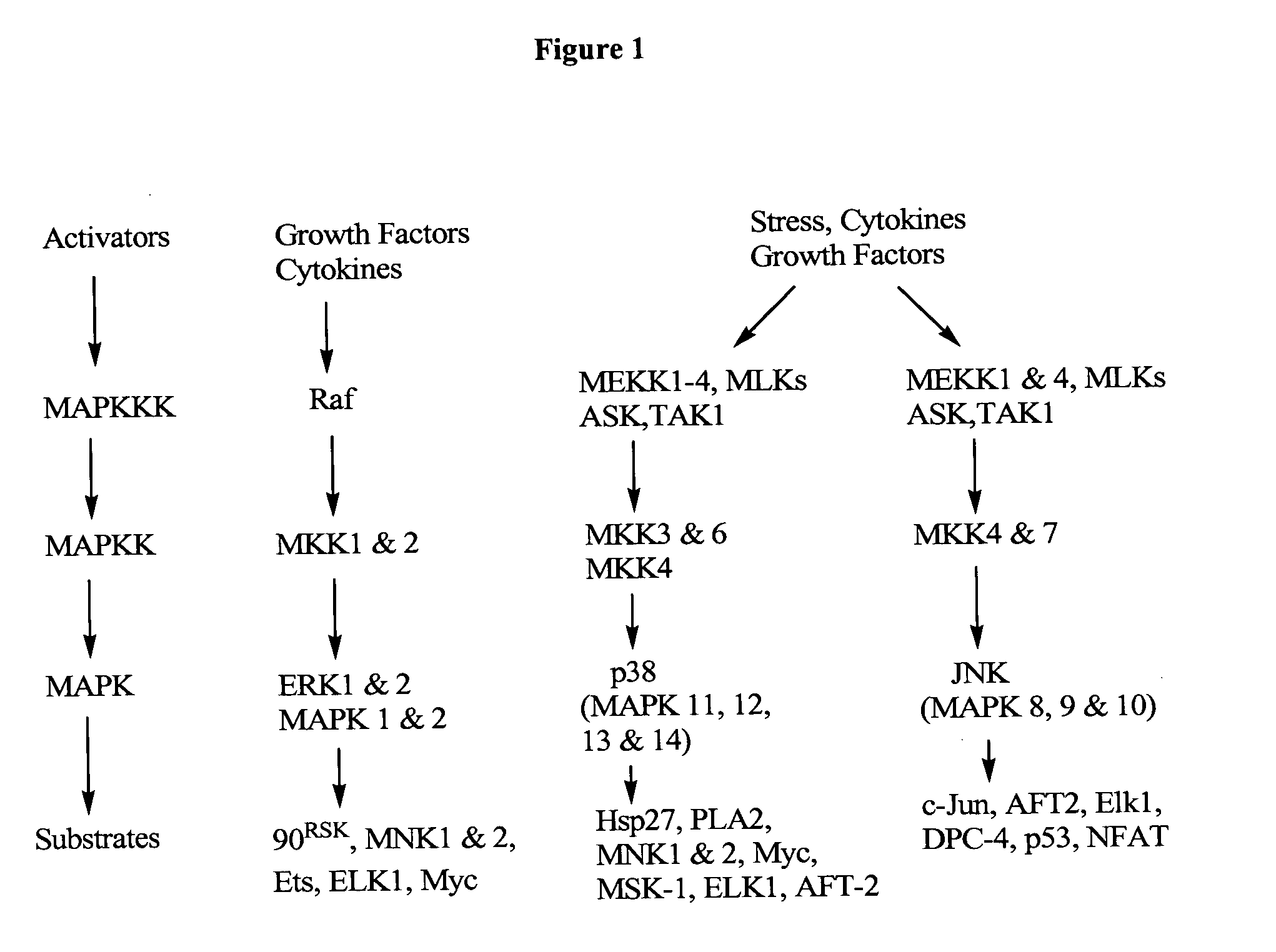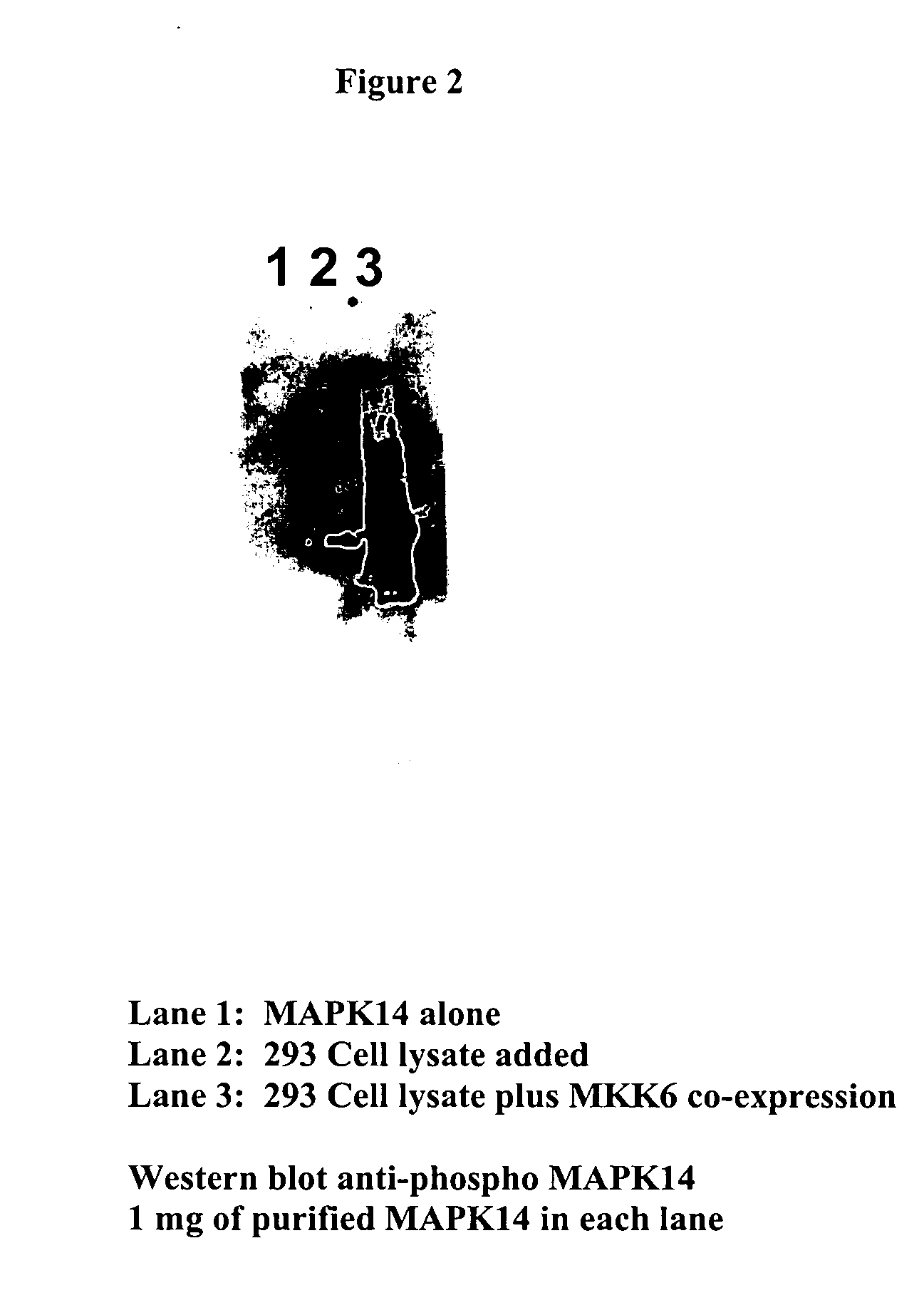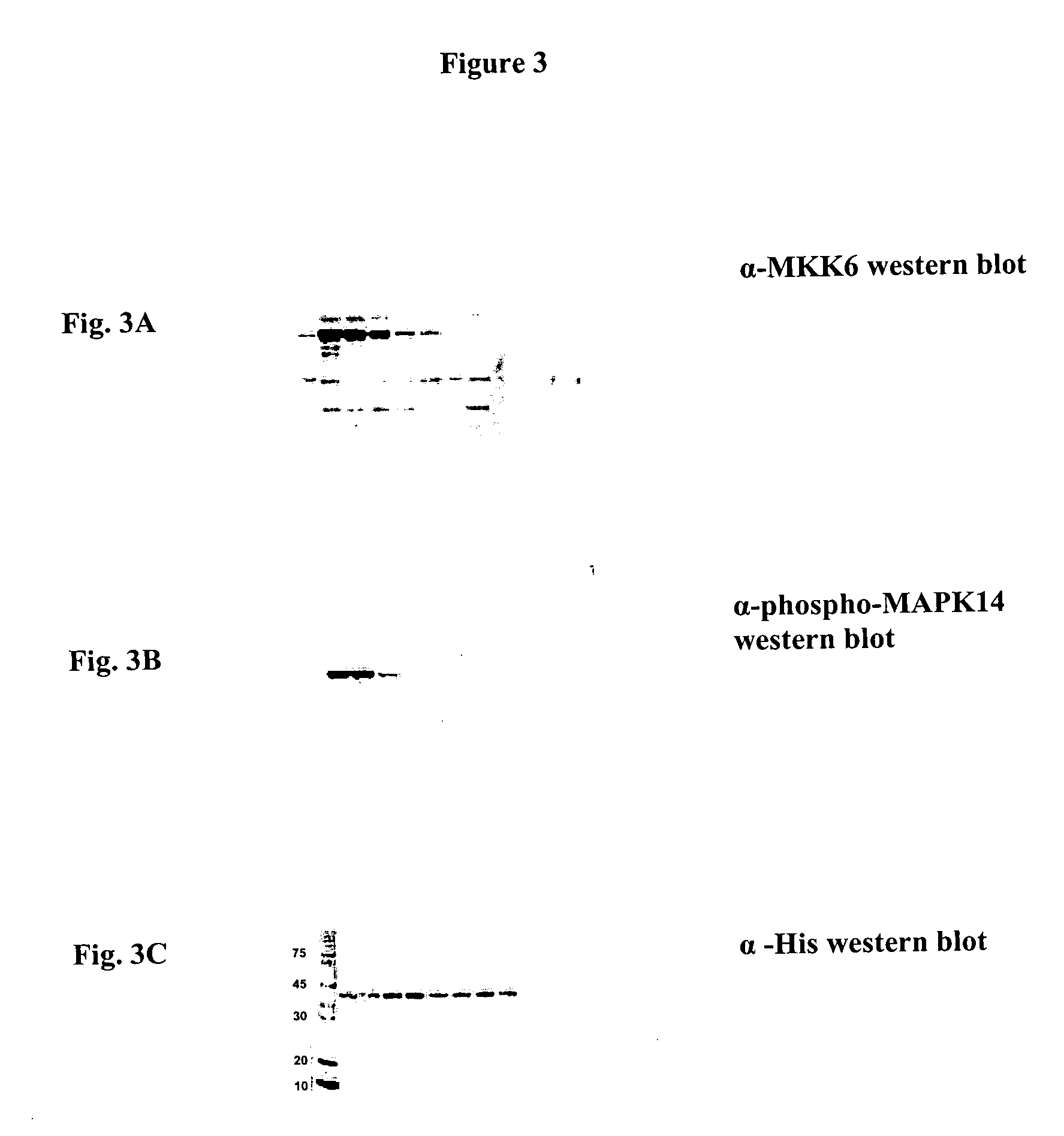Post-translational modification of proteins in cell-free expression systems
a cell-free expression and post-translational modification technology, applied in the field of cell-free protein expression, can solve the problems of inefficient post-translational modification process and add more complexity to subtle differences in response, and achieve the effect of high quality and high quality
- Summary
- Abstract
- Description
- Claims
- Application Information
AI Technical Summary
Benefits of technology
Problems solved by technology
Method used
Image
Examples
embodiments
[0028] In accordance with one embodiment of the invention a method for expressing an activated recombinant target kinase through the use of a cell free expression system is provided. Advantageously, the method allows for the production of an active kinase without requiring a purification step. Once the activated kinase is synthesized, the activated kinase can be subsequently purified using standard techniques. In one embodiment the recombinantly produced activated kinases are synthesized having a peptide tag (such as a six amino acid histidine terminal extension) that assists in the purification of the recombinantly produced activated kinase. In one embodiment the peptide tag can be bound the terminus of the kinase via a linker, and in one embodiment the linker is a labile linker.
[0029] In accordance with one embodiment of the present invention, both the target kinase to be activated and the enzyme responsible for the post-translational modification that activates the target kinase...
specific embodiments
EXAMPLE 1
Plasmid of Kinase and Upstream Kinase (MAPK 14 and MKK 6)
[0045] HIS-tagged kinase and no-tag upstream kinase were designed for PCR production. PCR was conducted 30 cycles for MAPK 14 using primers 5′-CTTTAAGAAGGAGATATACCATGTCACAAGAAAGGCCTACATTCTACCGGCAGGA-3′ (SEQ ID NO: 35) and 5′-TGATGATGAGAACCCCCCCCGGACTCCATTTCTTCT-3′ (SEQ ID NO: 36) and MKK 6 using primers 5′-CTTTAAGAAGGAGATATACCATGTCACAATCAAAAGGTAAAAAGCGAAACCCTGG-3′ (SEQ ID NO: 37) and 5′-TGATGATGAGAACCCCCCCCTTAGTCTCCAAGAATCAGT-3′ (SEQ ID NO: 38). These amplified sequence were cloned separately into pIVEX2.3d vectors (Roche Diagnostics Corporation, Indianapolis, Ind., USA) and the sequence confirmed. A stop codon was engineered into the MKK6 sequence immediately following the last wild-type amino acid to prevent the addition of the hexa-histidine tag from being added.
example 2
Eukaryotic Cell Extract (HEK 293 Cell Extract)
[0046] Cells were treated with regulators for the desired time. Cells were harvested by removing media and rinsing cells once with ice-cold PBS. The PBS was removed and 0.5 ml cell lysis buffer added (20 mM Tris, pH 7.5, 150 mM NaCl, 1 mM EDTA, 1 mM EGTA, 1% TRITON X-100, 2.5 mM sodium pyrophosphate, 1 mM sodium vanadate Na3VO4, 1 μg / mL leupeptin, 1 mM PMSF) to T-flask and incubated on ice for 5 minutes. Cell debris was allowed to settle by gravity or gently centrifuged at approximately 4,000×g for 5 minutes. The supernatant was transferred to a new tube and the cell extract stored at −80° C.
PUM
| Property | Measurement | Unit |
|---|---|---|
| molecular weight | aaaaa | aaaaa |
| pH | aaaaa | aaaaa |
| mass | aaaaa | aaaaa |
Abstract
Description
Claims
Application Information
 Login to View More
Login to View More - R&D
- Intellectual Property
- Life Sciences
- Materials
- Tech Scout
- Unparalleled Data Quality
- Higher Quality Content
- 60% Fewer Hallucinations
Browse by: Latest US Patents, China's latest patents, Technical Efficacy Thesaurus, Application Domain, Technology Topic, Popular Technical Reports.
© 2025 PatSnap. All rights reserved.Legal|Privacy policy|Modern Slavery Act Transparency Statement|Sitemap|About US| Contact US: help@patsnap.com



